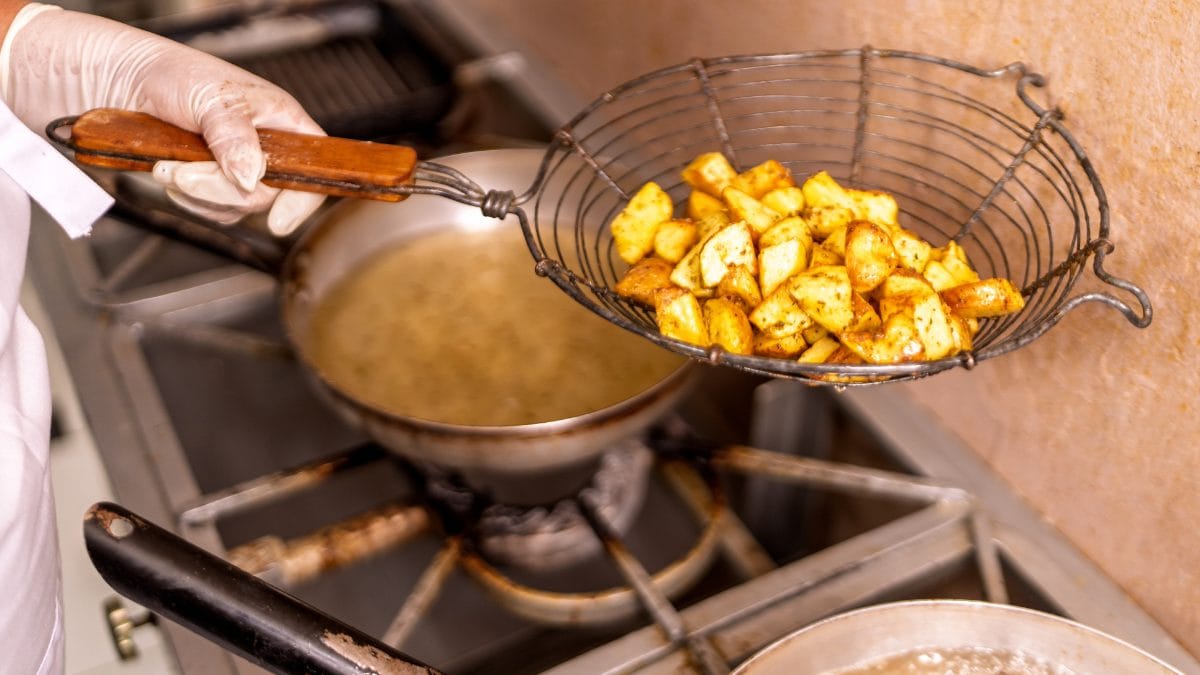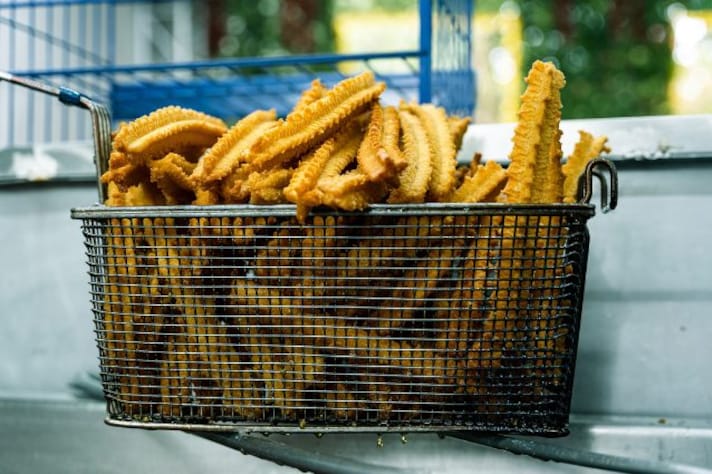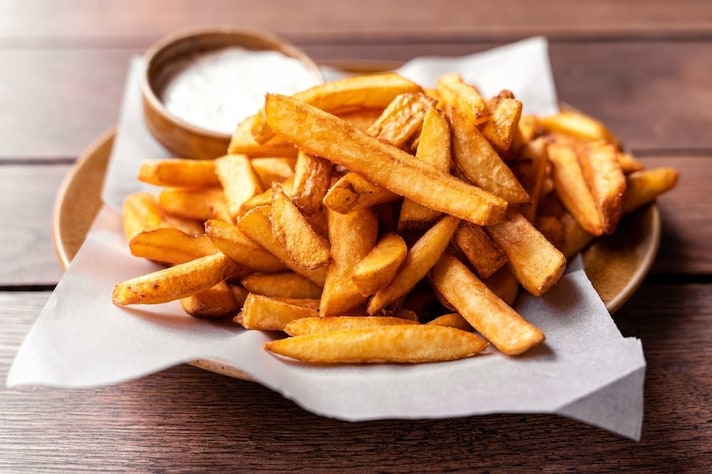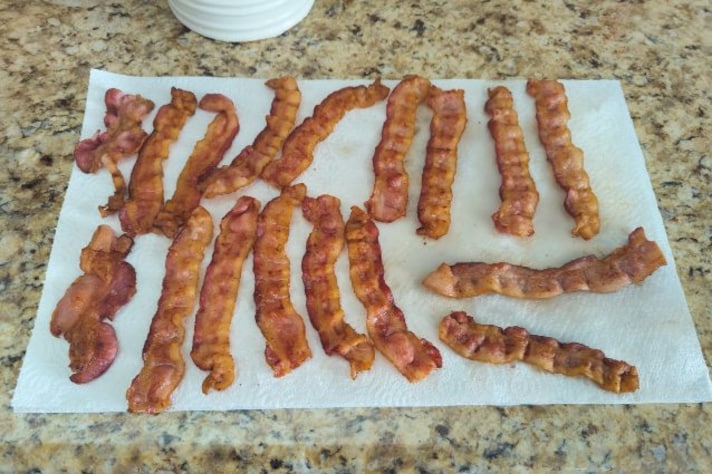
There’s a fine line between crispy and greasy. One makes your heart sing, the other just makes your hands slippery. Whether you’re frying chicken, roasting bacon, or crisping up a batch of hash browns, learning how to properly drain food can make the difference between “restaurant quality” and “fast-food afterthought.” It’s one of those kitchen skills that feels trivial—until you’re staring down a soggy pile of fries that lost their crunch in 30 seconds flat.
Draining greasy food is less about aesthetics and more about preserving texture. Fat is flavor, yes, but too much of it can drown out the food’s best qualities. A little technique goes a long way toward that delicate balance: golden, crisp, not greasy.
Why You Should Drain Greasy Food
Oil doesn’t just make food brown—it creates texture. When you cook something in fat, the outside crisps up as moisture inside evaporates. But once that food comes out of the pan, hot oil clings to the surface and keeps cooking it. If you don’t drain it fast, the trapped steam and residual grease soften everything. The result? Fries that go limp, fried chicken that loses its crackle, or bacon that tastes oily instead of smoky.
Proper draining stops that process in its tracks, letting your food cool and stay crisp without absorbing more oil than necessary. It’s the quiet, unglamorous move that separates a confident home cook from a careless one.
The Science of Fat Retention
Here’s a little science (don’t worry, no lab coat required): oil molecules cling to rough or porous surfaces, especially when they’re hot. As the food cools, the fat solidifies, creating that greasy film. To prevent it, you want to encourage drip and airflow—two things paper towels and cooling racks do best. It’s less about blotting away oil and more about giving gravity and time a helping hand.

What You Really Need
You don’t need fancy restaurant gear to do this right—just a few well-chosen tools that every cook should have at arm’s reach.
- Paper towels: The classic choice. Cheap, absorbent, and disposable, perfect for catching excess grease from bacon, fritters, or fried vegetables.
- Wire cooling rack: Great for airflow. Placing fried food on a rack set over a baking sheet allows oil to drip off without steaming the underside.
- Tongs or a slotted spoon: Helps lift food out of hot oil efficiently while letting most of the grease drip back into the pan.
- Brown paper bags: Old-school but effective, especially for fries or doughnuts. They absorb excess oil without sticking to the food.
Paper Towels vs. Cooling Racks
Every kitchen has its loyalties. Paper towels soak up grease instantly but can sometimes soften the underside of fried food by trapping steam. Cooling racks, on the other hand, keep things crisp but don’t absorb any oil—they just let it drip.
So what’s the solution? Use both. First, rest your food on a rack for a minute or two to let gravity do its work. Then, give it a quick blot with paper towels before serving. That combo leaves you with clean flavor and maximum crunch.
How to Drain Different Types of Food
Different dishes call for slightly different strategies, but the principle stays the same: hot oil off, air on.
Fried Foods: Chicken, Fries, Donuts

Transfer fried food to a cooling rack placed over a sheet pan lined with paper towels. This allows airflow underneath while catching drips. If you’re frying multiple batches, keep the pan warm in a 200°F oven while you finish cooking—the low heat keeps things crisp without drying them out.
Bacon and Sausage

Lay cooked bacon or sausage on a double layer of paper towels and pat lightly. Don’t press too hard, or you’ll lose that glorious crispness. If you plan to use the bacon fat later (and you should), pour it through a fine-mesh strainer into a heatproof jar while still warm.
Roasted or Sautéed Foods

For foods roasted in oil—like vegetables or pan-fried cutlets—rest them briefly on a paper towel-lined plate to absorb excess fat. If they feel oily when cold, you can quickly reheat them on a dry pan for a few minutes to restore crispness.
How to Dispose of Cooking Oil the Right Way
Now that your food looks great, don’t ruin your sink. Pouring oil down the drain is a plumbing nightmare waiting to happen. Instead:
- Let the oil cool completely.
- Pour it into a sealed container (like the original bottle or an empty can).
- Toss it in the trash, or take large amounts to a local recycling or disposal center.
- Some eco-conscious cooks even strain and reuse oil for another round of frying—especially if it hasn’t been overheated or flavored by strong foods.
Common Mistakes to Avoid
- Stacking food while it’s still hot. Steam builds up, making even the crispiest coating soggy.
- Over-blotting. Pressing too hard pushes oil deeper into the food or ruins delicate crusts.
- Skipping the rest period. Food needs a minute or two to let residual oil drip off naturally.
;Resize,width=767;)
